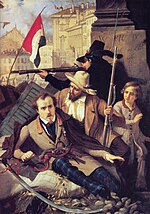
The unification of Italy, also known as the Risorgimento, was the 19th-century political and social movement that resulted in 1861 in the consolidation of various states of the Italian Peninsula and its outlying isles into a single state, the Kingdom of Italy. Inspired by the rebellions in the 1820s and 1830s against the outcome of the Congress of Vienna, the unification process was precipitated by the Revolutions of 1848, and reached completion in 1871 after the capture of Rome and its designation as the capital of the Kingdom of Italy.
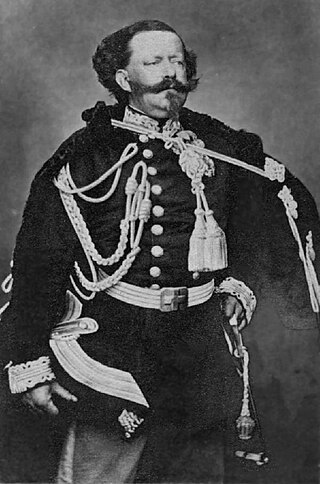
Victor Emmanuel II was King of Sardinia from 23 March 1849 until 17 March 1861, when he assumed the title of King of Italy and became the first king of an independent, united Italy since the 6th century, a title he held until his death in 1878. Borrowing from the old Latin title Pater Patriae of the Roman emperors, the Italians gave him the epithet of Father of the Fatherland.

This is an introduction to the postal and philatelic history of Italy.
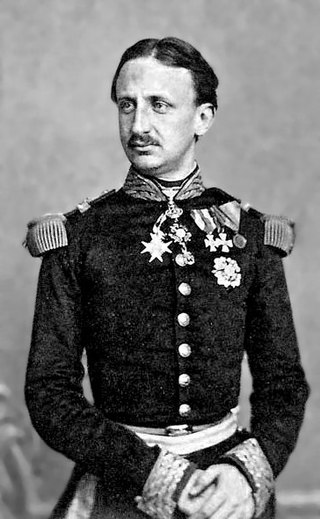
Francis II was King of the Two Sicilies from 1859 to 1861. He was the last King of the Two Sicilies, as successive invasions by Giuseppe Garibaldi and Victor Emmanuel II of Sardinia ultimately brought an end to his rule, as part of Italian unification. After he was deposed, the Kingdom of the Two Sicilies and the Kingdom of Sardinia were merged into the newly formed Kingdom of Italy.

The Duchy of Parmaand Piacenza, was an Italian state created in 1545 and located in northern Italy, in the current region of Emilia-Romagna.

The Grand Duchy of Tuscany was an Italian monarchy that existed, with interruptions, from 1569 to 1860, replacing the Republic of Florence. The grand duchy's capital was Florence. In the 19th century the population of the Grand Duchy was about 1,815,000 inhabitants.
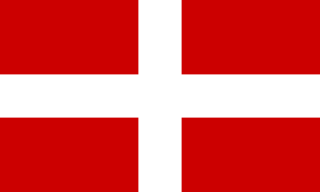
The Duchy of Savoy was a territorial entity of the Savoyard state that existed from 1416 until 1860 and was a possession of the House of Savoy.
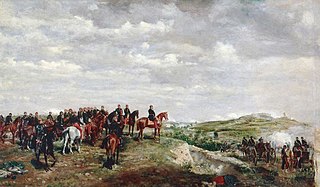
The Second Italian War of Independence, also called the Franco-Austrian War, the Sardinian War, the Austro-Sardinian War or Italian War of 1859, was fought by the Second French Empire and the Savoyard Kingdom of Sardinia against the Austrian Empire in 1859 and played a crucial part in the process of Italian Unification.

The Expedition of the Thousand was an event of the unification of Italy that took place in 1860. A corps of volunteers led by Giuseppe Garibaldi sailed from Quarto near Genoa and landed in Marsala, Sicily, in order to conquer the Kingdom of the Two Sicilies, ruled by the Spanish House of Bourbon-Two Sicilies.

The nobility of Italy comprised individuals and their families of the Italian Peninsula, and the islands linked with it, recognized by the sovereigns of the Italian city-states since the Middle Ages, and by the kings of Italy after the unification of the region into a single state, the Kingdom of Italy.
This is a timeline of the unification of Italy.
Between 1851 and 1860, the Grand Duchy of Tuscany, an independent Italian state until 1859 when it joined the United Provinces of Central Italy, produced two postage stamp issues which are among the most prized classic stamp issues of the world, and include the most valuable Italian stamp.
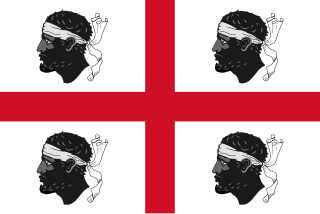
The Kingdom of Sardinia, also referred to as the Kingdom ofSardinia-Piedmont or Piedmont-Sardinia as a composite state during the Savoyard period, was a country in Southern Europe from the late 13th until the mid 19th century.

Camillo Paolo Filippo Giulio Benso, Count of Cavour, Isolabella and Leri, generally known as the Count of Cavour or simply Cavour, was an Italian politician, businessman, economist and noble, and a leading figure in the movement towards Italian unification. He was one of the leaders of the Historical Right and Prime Minister of the Kingdom of Sardinia, a position he maintained throughout the Second Italian War of Independence and Giuseppe Garibaldi's campaigns to unite Italy. After the declaration of a united Kingdom of Italy, Cavour took office as the first Prime Minister of Italy; he died after only three months in office and did not live to see the Roman Question solved through the complete unification of the country after the Capture of Rome in 1870.

The Piedmontese Republic was a revolutionary, provisional and internationally unrecognized government established in Turin between 1798 and 1799 on the territory of Piedmont during its military rule by the French First Republic.

The Plombières Agreement of 21 July 1858 was a secret verbal agreement which took place at Plombières-les-Bains between the chief minister of Piedmont-Sardinia, Count Cavour, and the French Emperor, Napoleon III. Some older English sources refer to it as the Treaty of Plombières. In modern times, it is merely referred to as an "agreement", since nothing was signed.
Relations between the Kingdom of Sardinia and the United States began in 1802 with mutual recognition, but formal relations were not established until 1839. Diplomatic relations ceased in 1861 when Sardinia was incorporated into the Kingdom of Italy.
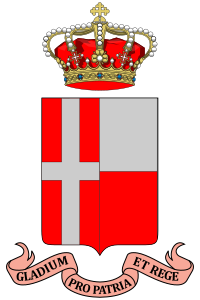
The Regiment "Cavalleggeri di Lucca" (16th) is an inactive cavalry unit of the Italian Army. The regiment was formed during the Second Italian War of Independence and participated in the Third Italian War of Independence. In World War I the regiment fought dismounted on the Italian Front and the Albanian front. After the war the regiment was disbanded. During World War II the regiment was reformed, but after a few months of service in Italy the regiment was disbanded after the announcement of the Armistice of Cassibile by invading German forces.

The Kingdom of Sardinia is a term used to denote the Savoyard state from 1720 until 1861, which united the island of Sardinia with the mainland possessions of the House of Savoy. Before 1847, only the island of Sardinia proper was part of the Kingdom of Sardinia, while the other mainland possessions were held by the Savoys in their own right, hence forming a composite monarchy and a personal union which was formally referred to as the "States of His Majesty the King of Sardinia". This situation was changed by the Perfect Fusion act of 1847, which created a unitary kingdom. Due to the fact that Piedmont was the seat of power and prominent part of the entity, the state is also referred to as Sardinia-Piedmont or Piedmont-Sardinia and sometimes erroneously as the Kingdom of Piedmont.




















